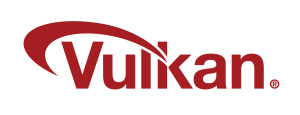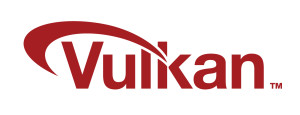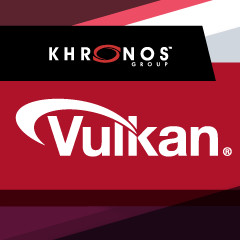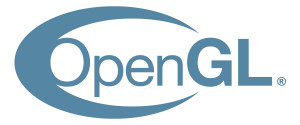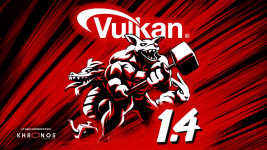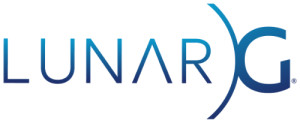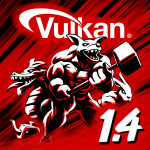Sascha Willems has reworked filtering for his Vulkan Hardware Database. A new settings page allows for more control over global filters applied to the data, hopefully making it easier to limit results to what people are actually looking for.
Vulkan tagged news
NVIDIA Vulkan Beta Driver Introduces BFloat 16 Support
NVIDIA recently published beta drivers that introduce the recently released VK_KHR_shader_bfloat16 extension in Vulkan 1.4.311 build. This extension allows for Brain Float BF16 operations within shaders in conjunction with the SPV_KHR_bfloat16 extension from SPIR-V. BFloat16 extensions should prove particularly useful for modern GPUs and software supporting Vulkan-accelerated machine learning / AI.
Datoviz: Ultra-Fast, High-Performance GPU Scientific Visualization Library Built on Vulkan
In this Khronos blog, learn about Datoviz, a cross-platform, open-source, high-performance GPU scientific data visualization library designed for interactive exploration of large datasets. Written in C/C++, it leverages the Khronos Vulkan® graphics API and integrates with the glfw window library. Datoviz aims to provide a unified, language-agnostic platform for interactive visualization in both 2D and 3D, with support for GUIs and general-purpose GPU compute. Datoviz demonstrates how Vulkan’s capabilities can be leveraged for high-performance GPU visualization, tackling the challenges of large-scale scientific data rendering while maintaining flexibility and efficiency.
LunarG Releases Vulkan SDK 1.4.309.0
LunarG has released Vulkan SDK 1.4.309.0 for Linux, Windows, and MacOS. Supporting Vulkan API revision 1.4.309, this SDK update brings a host of enhancements designed to streamline your graphics development workflow. Whether you’re debugging shaders, optimizing performance, or exploring new extensions, this SDK has something for you.
Key enhancements in this version include:
- Vulkan Validation Layer error messages get a major upgrade—now clearer, more actionable, and easier to digest due to a standardized format.
- The Vulkan Configurator levels up with slick new features, aimed at improving developer productivity.
- Ten new extensions join the lineup, expanding your creative toolkit.
- Validation coverage sees a boost, helping you catch more issues with less hassle.
Datoviz: Ultra-Fast, High-Performance GPU Scientific Visualization Library Built on Vulkan
Datoviz is a cross-platform, open-source, high-performance GPU scientific data visualization library designed for interactive exploration of large datasets. Written in C/C++, it leverages the Khronos Vulkan® graphics API and integrates with the glfw window library. Datoviz aims to provide a unified, language-agnostic platform for interactive visualization in both 2D and 3D, with support for GUIs and general-purpose GPU compute.
Collabora Blog: Goodbye Nouveau GL. Hello Zink!
Starting with Mesa 25.1, Nouveau users will no longer get the old Nouveau OpenGL driver by default and will instead get Zink+NVK. Unlike most OpenGL drivers which are written to target the underlying hardware directly, Zink is an OpenGL implementation written on top of Vulkan. Collabora has been talking about this for a while, but the MR has landed today.
NVIDIA RTX Mega Geometry Now Available with New Vulkan Samples
To render high quality assets with higher instance counts and greater triangle density, NVIDIA introduced RTX Mega Geometry. RTX Mega Geometry is available today through NVIDIA RTX Kit, a suite of rendering technologies to ray trace games with AI, render scenes with immense geometry, and create game characters with photorealistic visuals. As part of this release, new Vulkan samples have been made available to all developers. These open-source samples show how you can use clusters of triangles to build acceleration structures faster, render massive amounts of animated geometry, path trace models with streaming level of detail (LoD), and more. NVIDIA is also releasing two libraries to help process geometry into clusters.
NVIDIA Posts Vulkan RTX Neural Shader Samples
NVIDIA RTX Neural Shaders bring small neural networks into programmable shaders. This technology framework enables the training and deployment of neural networks directly within shaders, enabling you to compress game data and shader code and approximate film-quality materials, volumes, geometry, and more in real time. While DirectX Support is not available yet for neural shading applications, Vulkan support is available today.
Mesa’s Venus Now Exposes Vulkan 1.4 Support
Mesa's Venus, a Vulkan driver within the Mesa 3D graphics library, now exposes accelerated Vulkan API support within virtualized environments (VMs). On the Virglrenderer side for the host renderer bits of Vulkan 1.4, this merge took Vulkan 1.4 over the finish line with virglrenderer.
Help Shape the Future by Taking LunarG’s Vulkan Ecosystem Survey
Help shape the future of the Vulkan developer ecosystem! The 2025 LunarG Ecosystem Survey is now live. A few minutes of your time will help us chart the course and set priorities for the upcoming year. Survey closes on February 19, 2025.
Vulkan GPU-Assisted Validation Startup Time Improved by >10X
LunarG describes how they improved startup time by a factor of 10 by employing four main strategies to accelerate the process: leveraging the DontInLine flag, segmenting instrumentation, utilizing Vulkan robustness features, and optimizing for graphics pipeline libraries. Click through to learn more about these strategies and a bonus tip!
LunarG Releases Vulkan SDK 1.4.304.0 with Full support for Vulkan 1.4
Today, LunarG released a new Vulkan SDK for Windows, Linux, and macOS that fully supports Vulkan API revision 1.4.
New features in SDK 1.4.304.0
Highlights of the Vulkan SDK 1.4.304.0 release across all operating environments include:
- Full support for the Vulkan 1.4 API specification
- Inclusion of the release version of the Slang shader language and compiler (previous SDK releases contained the beta version of slang)
- Inclusion of a shared library for glslang
- 20+ Vulkan extensions added or promoted to core
- Updates to the Vulkan Configurator (vkconfig) to improve quality and stability
- Improved validation coverage
- plus more...
Podcast: The Vulkan Graphics API with Tom Olson and Ralph Potter
Tom Olson and Ralph Potter are the outgoing and incoming Chairs of the Vulkan Working Group. They join the Software Engineering Daily podcast with Joe Nash to talk about earlier graphics APIs, what motivated the creation of Vulkan, modern GPUs, and more.
Khronos at SIGGRAPH Asia 2024: Major Announcements, Engaging Sessions, and Community Building
Khronos just returned from a dynamic and productive week at SIGGRAPH Asia 2024, which took place from December 3–6 in the bustling city of Tokyo, Japan. With key announcements, a series of well-attended Birds of a Feather (BOF) sessions, and a vibrant networking event, Khronos reaffirmed its position at the forefront of standardization for the 3D industry.
Here are some highlights of Khronos’s activities at SIGGRAPH Asia 2024, from unveiling new initiatives to fostering collaboration across the graphics, web, and XR ecosystems.
NVK now supports Vulkan 1.4
NVK, an open-source Vulkan driver for NVIDIA hardware in Mesa, is a day-zero conformant Vulkan 1.4 implementation. Vulkan 1.4 support in NVK has been merged into Mesa and will be part of the Mesa 25.0 release in early 2025.
